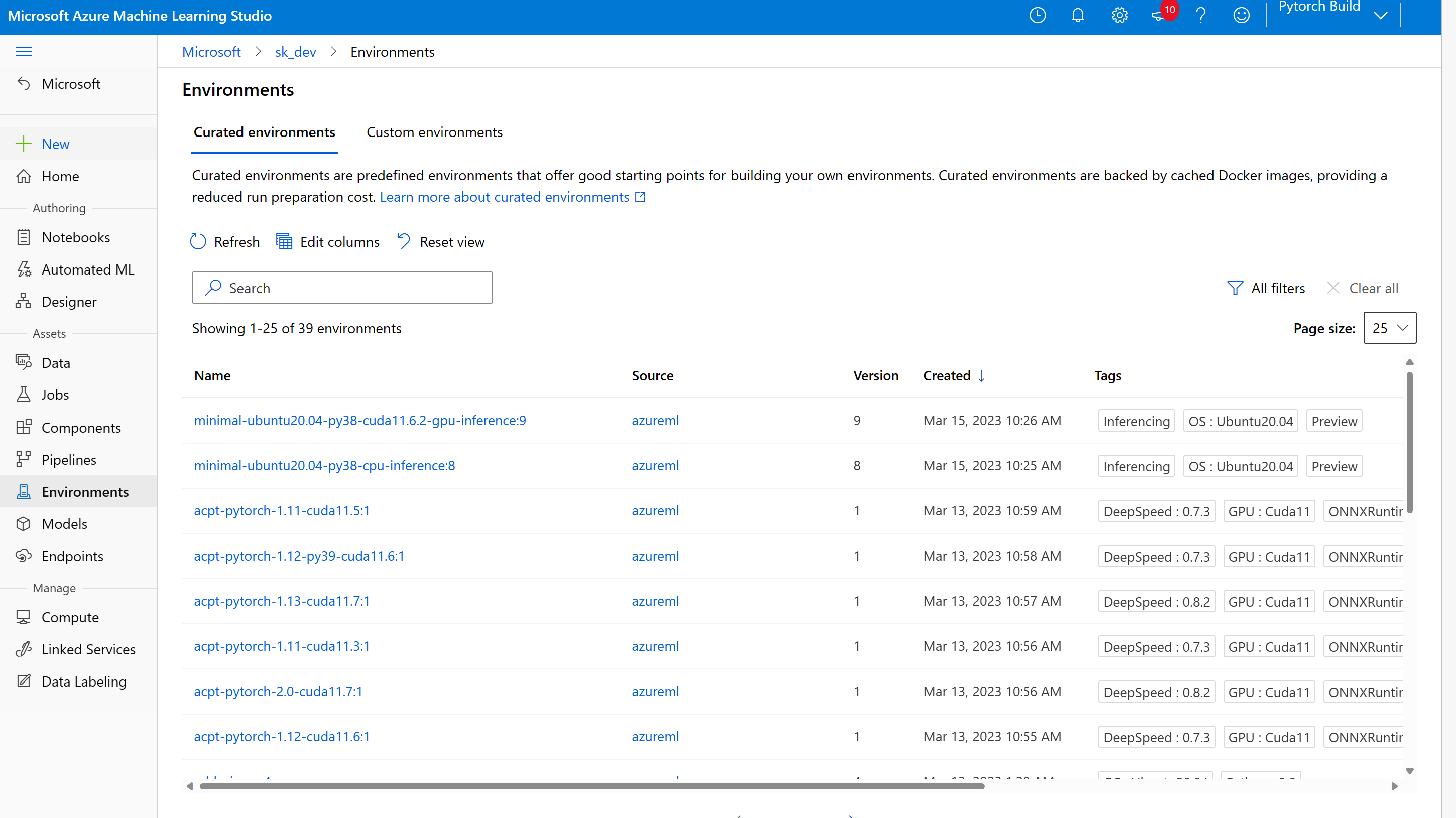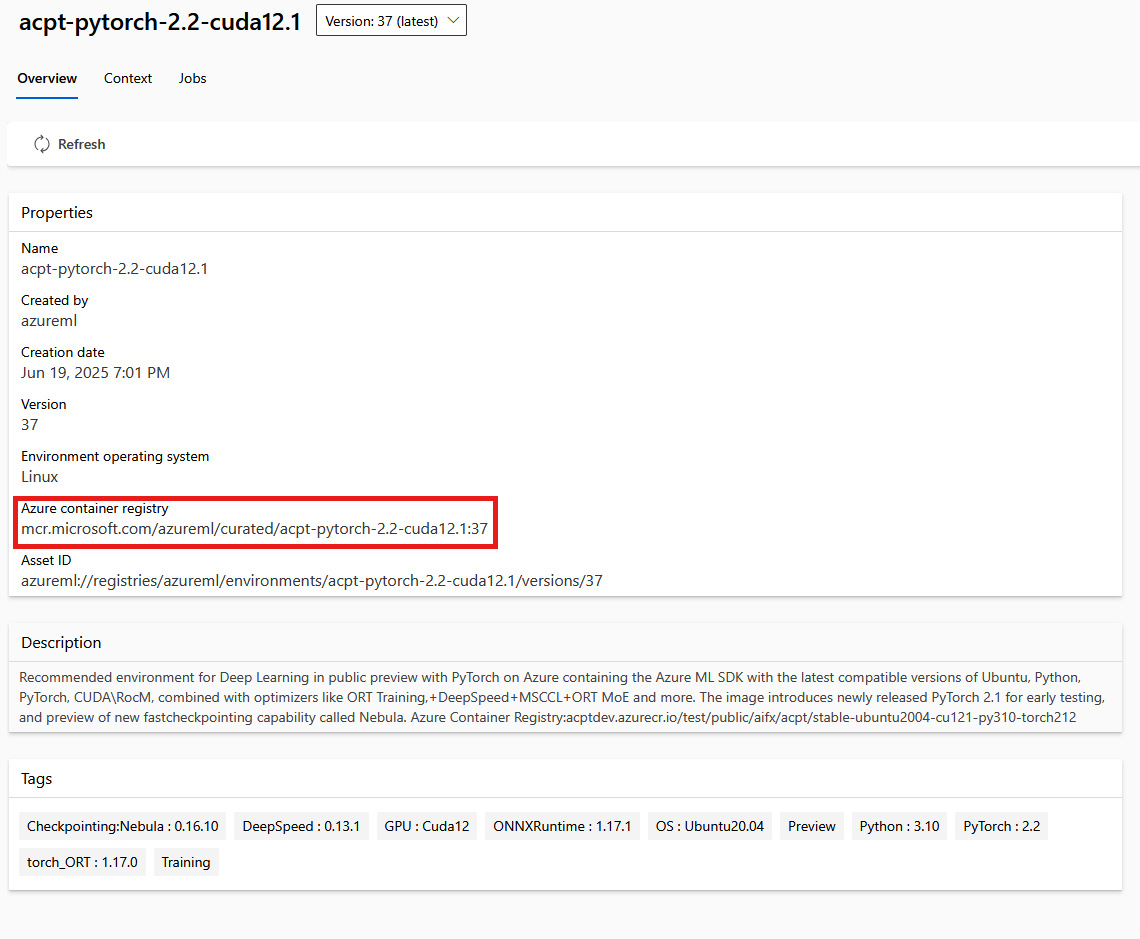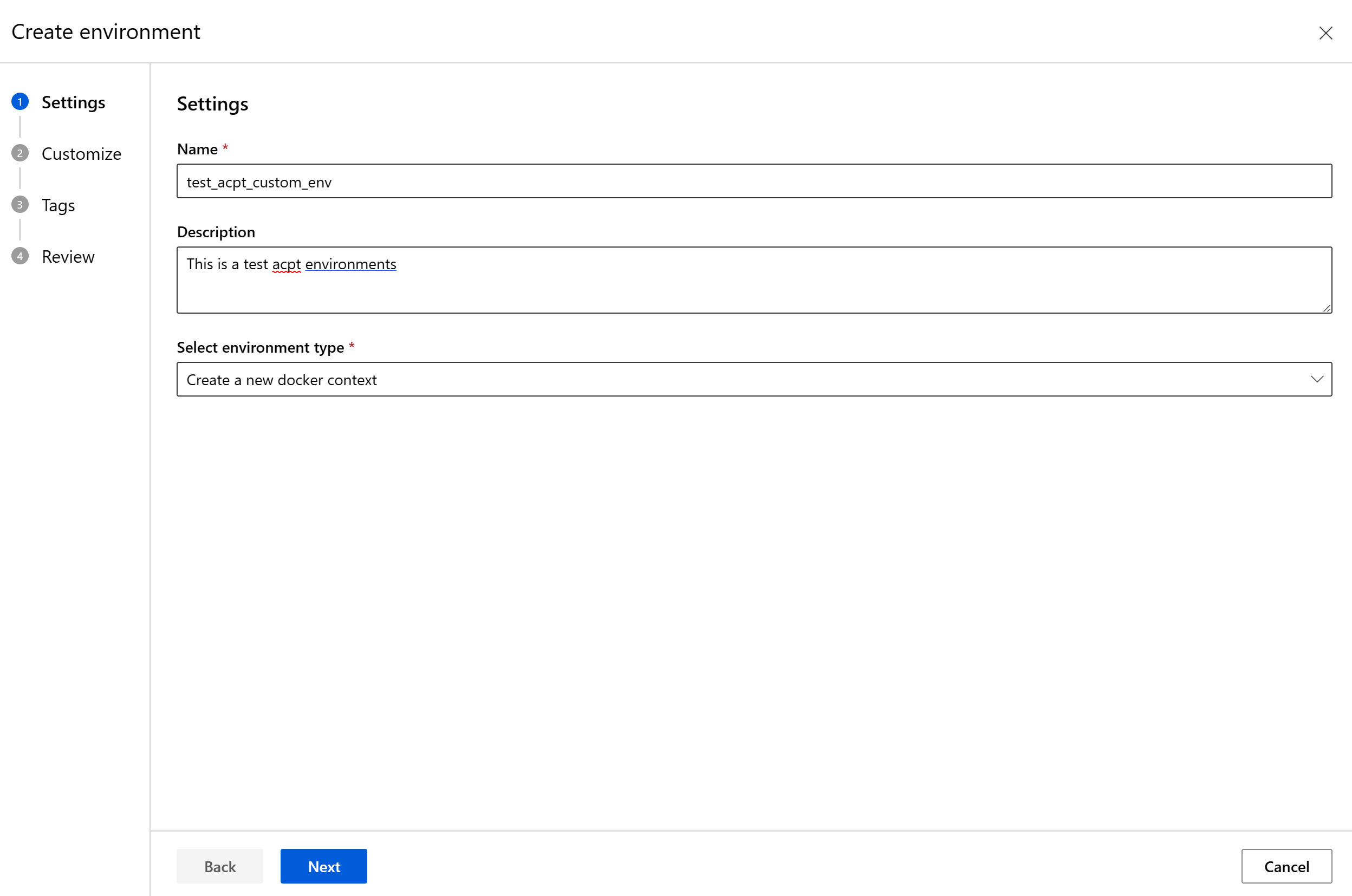Note
Access to this page requires authorization. You can try signing in or changing directories.
Access to this page requires authorization. You can try changing directories.
In this article, you learn how to create a custom environment in Azure Machine Learning. Custom environments allow you to extend curated environments and add Hugging Face (HF) transformers, datasets, or install other external packages with Azure Machine Learning. Azure Machine Learning enables you to create a new environment with Docker context that contains an ACPT curated environment as a base image with additional packages on top of it.
Prerequisites
Before following the steps in this article, make sure you have the following prerequisites:
- An Azure subscription. If you don't have an Azure subscription, create a free account before you begin. Try the free or paid version of Azure Machine Learning.
- An Azure Machine Learning workspace. If you don't have one, use the steps in the Quickstart: Create workspace resources article to create one.
Navigate to environments
In the Azure Machine Learning studio, navigate to the "Environments" section by selecting the "Environments" option.
Navigate to curated environments
Navigate to curated environments and search for "acpt" to list all available ACPT curated environments. Select an environment to view its details.
Get details of the curated environments
To create a custom environment, you need the base Docker image repository, which you can find in the Description section as Azure Container Registry. Copy the Azure Container Registry name to use later when you create a new custom environment.
Navigate to custom environments
Go back and select the Custom Environments tab.
Create custom environments
Select + Create. In the "Create Environment" window, provide a name and description for the environment, and select Create a new docker context in the "Select environment type" section.
Paste the Docker image name that you copied previously. Configure your environment by declaring the base image and adding any environment variables you want to use and the packages that you want to include.
Review your environment settings, add any tags if needed, and select the Create button to create your custom environment.
You've now created a custom environment in Azure Machine Learning studio that you can use to run your machine learning models.
Next steps
- Learn more about environment objects:
- What are Azure Machine Learning environments?
- Learn more about curated environments
- Learn more about training models in Azure Machine Learning
- Azure Container for PyTorch (ACPT) reference





